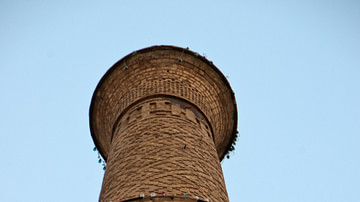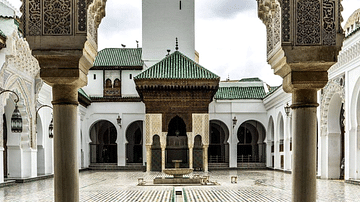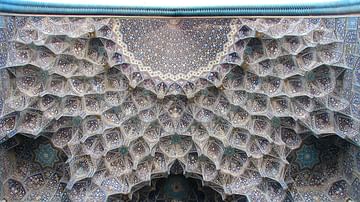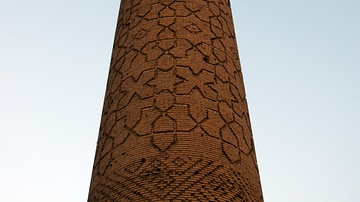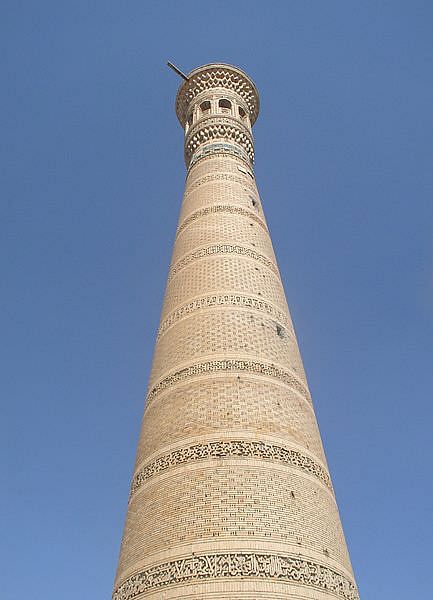
A minaret is a feature of Islamic architecture and is the place from where the call to prayer is sent out. They are also known as a manār or manāra in Arabic, meaning place of fire or light (nar or nur). According to scholars, the expression manāra was adapted from the Aramaic language, which when translated means “candlestick”. Another literal Arabic connotation for minaret is Sawma'a -'cloister' or 'cell'- a spiritual reference to the shining light of the lamp in the cloister. The less-often used Arabic phrase mi'dhana more appropriately conveys the purpose of the minaret.
The minaret then, is a tall, slender tower that is a significant feature of every mosque, and is one of the earliest characteristics of Islamic architecture. It is surrounded by one or more projecting galleries from where the muezzin, the person who chants the call for prayer, announces the prayer to worshippers in the Muslim community. The practice of the call for prayer or adhan became a customary part of religious rituals in the second year of the Hijra (623-24 CE).
Scholarly findings trace the origin of the construction of minarets to the Umayyad epoch and offer the explanation that these minarets were a copy of church steeples found in Syria in those times. Nevertheless, other references suggest that these towers in Syria originated from the ziggurats of Babylonian and Assyrian shrines of Mesopotamia. Yet another description associates the manāra to the function of a 'light house', guiding travellers.
In his article on the origins of the minaret, K.A.C. Creswell elucidates that the four Ṣawāmi constructed on the roof of the Umayyad mosque in Fustat were the earliest minarets to be built. Creswel cites the Umayyad mosque in Damascus, constructed with four squat towers in each corner, as the earliest of pre-Islamic temples which used such towers to call for prayer. He, therefore, suggests the minaret was inspired by a Damascan prototype and named Sawma'a due to its stocky appearance and similarity to the hermit cube.
Despite the fact that minarets were not a familiar facet of the earliest mosques, these towers very soon adorned the skylines of Muslim cities and became synonymous with Muslim shrines, and every region developed their own signature styles. The construction of minarets was greatly influenced by the region's society, culture and context which determined their shape, size and form.

